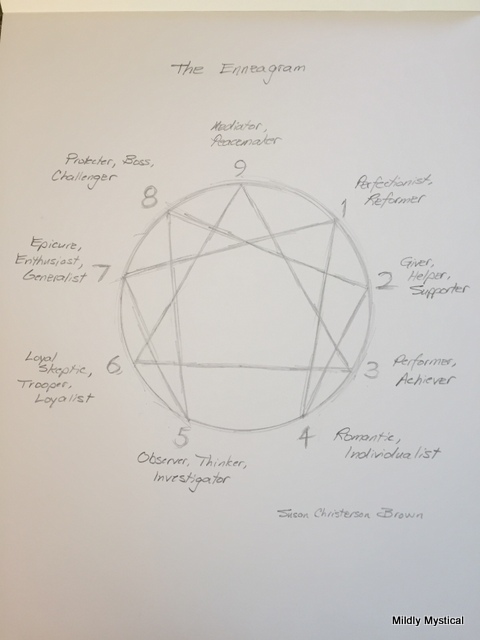When I began studying the Enneagram, it was to understand more about myself and others. The Enneagram is great for making sense of why we do what we do. But figuring out our type is only the beginning of what is possible. I continue working with the Enneagram because it offers a path toward transformation.

To briefly explain, the Enneagram (from the Greek ennea, meaning “nine”) names nine basic types of people, with nine different essential gifts and inherent challenges. We have access to all of these human traits, but our Enneagram type colors how we process our experience. Our type is the lens through which we view the world.
Understanding our Enneagram type makes possible a new level of self-awareness. Appreciating the basic human longings that motivate the nine Enneagram types naturally cultivates greater compassion for ourselves and others.
But it’s important to remember that our essential self has no Enneagram type. Our type is the coping mechanism we formulated long before we were conscious of what we were doing. Our type is the way we found to make our world ok when our essential well-being felt threatened.
Our type structure helped us when we needed it. As life unfolds, the consciousness and self-awareness that makes us human also gives rise to a sense of self-doubt and disconnection. As we grow up, there comes a time when we lose our natural connection to the joy and vitality of being alive. Or to put it more poetically, we inevitably experience being expelled from the garden.
When that happens we work to overcome what we perceive as our shortcomings, and we do this in the nine basic ways named by the Enneagram. We reach for our strongest gift, believing it’s up to us to create or earn a sense of connection, safety, or worth.
Understanding our Enneagram type helps in those moments when those deeply ingrained automatic patterns show up. We begin to notice when habitual impulses try to take over, and we learn to pause. In the space created by that pause we can be more perceptive. We can consciously choose what to do. This is the path toward transcending our type structure and becoming free.
In this way, noticing our type structure in action comes to serve as a bell of mindfulness. When we realize we’re being driven by old patterns, we can learn to respond differently. Instead of automatically following our habitual escape patterns, we cultivate the ability to stay present. In doing this we lay down new neural pathways and begin developing responses that we consciously and freely choose.
Working with our type patterns helps us to wake up. We learn to see more clearly and act more effectively. We experience how the divine life force sustains us. We learn to differentiate between our true self and our conditioned responses. We become less susceptible to toxic influences, whether in the form of external situations or internal patterns. Instead of relying on unconscious coping mechanisms we learn to be present to ourselves and to the situation as it is, and to act from a place of higher wisdom.
I haven’t mastered all of this, of course, but I’m grateful to be on the path. Working with the Enneagram has placed me into the flow of life in a way that brings a new level of beauty, meaning, and connection.
I’d love to serve as your companion as you make your own Enneagram journey. Write to me at susan@mildlymystical.com with your questions or to schedule an Enneagram typing interview. I’m happy to meet you at my office in Lexington, Kentucky or online via Zoom.
